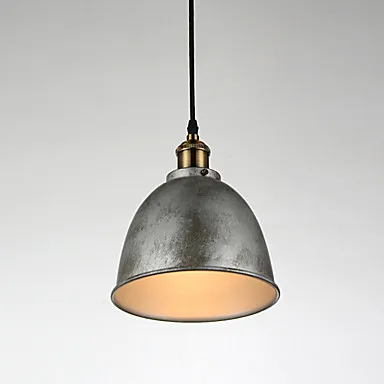The Top High-End Interior Lighting Site
Lighting is among the most essential components of an interior. It doesn't just illuminate a space and make it appear more spacious, but it can also change its appearance. On the one hand, it can turn a drab room into a glossy-magazine-worthy space with the simple flick of a switch or, on the other, it can under- or over-illuminate resulting in headaches, tired eyes and lighting fatigue. Albert Hadley, a renowned American interior designer, once said, "Design is defined through lighting and shading, and appropriate lighting is extremely important." This lavish light guide will guide you through the many types of lighting available and provide the most expert tips on how to design the lighting in your home.
Light Types
First thing's first, there are two main types of lighting which everyone would benefit from understanding a bit more about: natural light and artificial light.
1. Natural Light
The sun is the best natural light source. It's stimulating for the mind and is completely free. However, it is difficult to manage. There will be different light levels according to where your home is situated. The north receives more sunlight than the south, and the east is more luminous. It also depends on which direction your home faces. The level of natural light in a room is also affected by the seasons and time of day. Window treatments help control the natural light. For rooms with little natural light Interior designer Sara Cosgrove suggests that "sheers and window treatments are the most effective ways for controlling natural light, as is the use of mirrors." Mirrored furniture (like the Carina bedside cabinet above) can also be useful and also provides storage space. In rooms that are flooded with sunlight, this can be controlled by the use of drapes lined in heavier fabric. Additionally, glare is a problem that must be addressed. A room that is too bright could look dull and cold. You can control the sun's rays and reduce glare by adding an adjustable window treatment like louvers, slats, venetians, roman blinds, or shutters made of plantation. Combustion light (i.e. the use of a burning light source (e.g. candles, candles or flame) is a potent and atmospheric way to get natural light. The addition a roaring flame creates a stunning area for the chalet reception an unforgettable experience. Inge Moore (of The Gallery HBA). The elegant candlesticks and candelabra that are used to hold statuesque tapers look fantastic on the mantlepieces , as well as at the ends of formal dining tables. The use of lanterns and hurricanes is employed to create a relaxing setting indoors or outside.

2. Artificial Light
To create layers of light within your home, artificial lighting is a great option. Warm lighting (opposed to a bright light) is the most inviting option for living spaces. Artificial lighting is a great way to improve the design of a room and create zones. It can also alter the perceived proportions. When planning your lighting scheme be sure to keep these five categories of lighting in your mind. Take note of where you need what, the way you intend to utilize your space and use a range of lighting effects to create the desired appearance.
What Are The Types Of Interior Light
There are three main types that include mood, ambient and task. There are many types of lights that could be used in interior lighting. However, it is possible to combine several lights in one category. It is crucial to be aware of the differentiators between each type of lighting so you can create a successful plan.
A. General Lighting
General lighting forms the base of a lighting strategy. It emits an even glow and lights areas for the purpose of. General lighting must have a dimmer switch as it's usually direct. This permits light changes to be taken into account. The central pendant light that is the most common source of all lighting, is a key element in the design of the space. A stylish or expensive chandelier can make a great visual statement in a space and draw the eye. These must be accompanied with other lighting layers, since the light source itself can cast unflattering shadows particularly for people and give no life to an area. A poor lighting system that is designed to make spaces inviting is typically deemed to be too simplistic. Check out recommended cerno group advice.

B. Accent Lighting
Accent lighting is similar in the function of task lighting. It's lighting system that is created to highlight particular features within a room. Accent lighting can be used to highlight sculptures, artwork, and objects in pedestals or cabinets. This helps to enhance art pieces and avoid them becoming lost in a dark space. Accent lighting is similar to task lighting, in that it demands more lumens (light output) than task lighting. Therefore, it needs a higher wattage. Ambient lighting can be used as accent lighting. Accent lighting for architectural design tends to be as soft as ambient lighting but emphasizes textures and defines the perimeters of an object. Check out most popular accent wall lights brands.
C. Ambient Lighting
Ambient lighting is the second layer of lighting. It's a great supplement to the general lighting. Both types share important characteristics--they're primarily functional and used to light a complete area. They differ in the direction they emit light. April Russell, an interior designer, clarifies the distinction by this quote: "General lighting is simply that--practical lighting for all time of the day as well as night. Ambience lighting needs to be linked to dimming systems in order to regulate the intensity according to situation. Ambience lighting is usually used for entertaining--it creates drama." Ambient lighting is indirect, and consequently less sombre than normal lighting because it isn't typically utilizing downlighting, it doesn't create shadows that look unflattering. Think about eyeballs and wall sconces as lighting fixtures that illuminate the walls. The lighting that is used in this space is an example of architectural lighting. It can be used to alter the appearance or the size of an area. This windowless room would feel extremely dark and confined without it. Check out top Umage recommendations.

D. Task Lighting
Task lighting is a light source that is used to complete the task at hand, such as reading or cooking. These lights require a higher wattage to be effective in the natural environment. Together with adequate ambient light to reduce eyestrain due to the stark contrast between light and dark areas. Working and reading areas (like this home office designed by Elicyon) are among the most obvious places that require task lighting. The balanced-arm lamps are great for desk designs, while flexible reading lights fixed near a headboard are great for reading at night. Mirror lighting is ideal for bathroom areas for personal grooming and showers. Task lighting is essential for cooking. There are a variety of ways to light the kitchen. They include concealed downlights over worktops, under-cabinet spotlights , and the hanging of a pendant light low over the prep island. To create foot flow pathways Task lighting can be placed in hallways and rooms as well as in the form of floor-level lighting or risers on stairs. See the most popular Modern Forms tips.
E. Mood Lighting
The mood lighting of a room is more important to the overall appearance of a room than general lighting and a room would appear bare without it. Through creating light pools that counteract shadows from ambient lighting, it helps make the space more inviting. It's also an important aspect of the decor. It's usually equally focused on style and function. Solid consoles or side tables are superior to other alternatives for table lamps. The wires can get difficult to conceal. You can either thread wires through a tiny hole through the table or use tape or attach them to the legs. The lamps' positions will be in close proximity to plug sockets. This is yet another reason not to plan the electrical wiring of your home until after you've finished designing. Since mood lighting is typically the light source closest to eye level It is important to block any glare from unsightly bare bulbs with a filter. You can also shade ambient lighting or general lighting, when you see the light bulb from beneath.
In Summary
https://casadiluce.ca/ You have many options in high-end lighting. These tips above will assist you to select the right high-end lighting to illuminate your home. CasaDiLuce.ca offers a broad range of lighting options that can create the ideal atmosphere. Are you interested in knowing more? CasaDiLuce.ca provides lighting products online in Toronto. |


 新浪微博
新浪微博 QQ空间
QQ空间 人人网
人人网 腾讯微博
腾讯微博 Facebook
Facebook Google+
Google+ Plurk
Plurk Twitter
Twitter Line
Line
